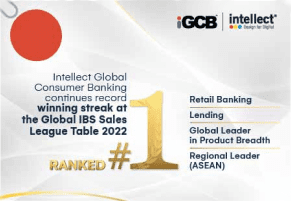For banks and financial institutions, the effort of delivering the same experience across touch points has led to a stalemate. One reason is that channels tend to be considered in silos when they are built for the customer. The daisy chain approach to building and improving each touch point across existing channels has never been optimal. The results are, therefore, inadequate.
With ‘Customer Journeys’ suddenly hitting the top of the charts in banking vocabulary and the focus shifting from merely delivering product functionality at a touch-point, to the process itself, the pay off is now focused on the customer, from initiation through to fulfillment.
When the goal is to be Primary Banker to the customer, the playing field broadens to ‘life journeys’. Channels become incidental. Omnichannel experiential consistency is merely a means to an end. The emphasis is on designing a string of memorable experiences over time, each of which plays a role on cementing the relationship.
With so much design emphasis, it is only natural that UX (user experience) conversations have become more ubiquitous and nuanced than ever before. As Adam Richardson writes in his article, Great UX does not Guarantee a Great Customer Experience, “It’s one thing to create a great looking product that’s easy to use. It’s another thing to create a great experience that continues to improve, delight, and expand in scope over time. The first is user experience. The second is customer experience.”
The need of the hour is an omnichannel platform. One that has no technology constraints. One that is truly digital. One that brings it downto an honest appreciation of UX design in the context of CX (customer experience).
Principles First; Design Second.
Setting the ground rules to design great customer experiences.
In today’s experience economy, customers interact with brands in ways that could not have been imagined earlier. The best path to becoming and remaining relevant, therefore, is to apply technology not only to ensure that it impacts your business and brand positively, but also to create meaningful and long lasting relationships. Design is key. There is no arguing this.
Foundational principles are vital to govern this evolutionary journey of customer experience design by focusing on structure and discipline without hindering creativity and innovation.
Of many such, a recent founded concept on bringing the science to creativity is ‘Design Dynamics’ – The UX grammar that encompasses visuals, content and placement dimensions. Widely used in various permutations, the dimensions and their elements allow a large canvas for creativity. These dynamics must be governed to urge the careful crafting of the little things that will make a big difference. That difference is Great Design. Simply put in principles, Great Design is,
- About real people first.
- Not for yourself. You are not the user.
- Invisible.
- Not decoration. It is Foundation.
- About Transformation. Not beautification.
- A process that is truly holistic.
- Focused on Simplexity. Less is more. Do more with less.
- Fit for Purpose. Do a couple of things well. And at the right time.
- Built by Join(t) Forces. Magic sits in the marriage between technology, strategy with product designs.
- Comes only when you Co-Create. Customers and colleagues can learn us a lot by working together, testing assumptions.
- Speaks the Language of your Investors in the Board. Early stage prototypes give a face to a plan.
When put explicitly, adoption is the direct result of great design. So are great app store ratings and reviews, blogs, influencer reviews, trend listing, chart topping, social shout outs, likes, shares, more followers, more downloads, and new acquisitions at lower costs than imaginable. Meaning greater Return on Engagement (Yes, the new RoE). You get where the business meets with equity, loyalty and, finally the brand.
To be honest, it’s not really important whether your design approach is desktop-first or mobile-first. What is important is an appreciation that engagement is how people choose to get value from the user experiences their devices enable. The onus is on you to ensure engagement drives your design philosophy, and is suitably interpreted to best take advantage of the features of a device or channel, and to work around its constraints.







